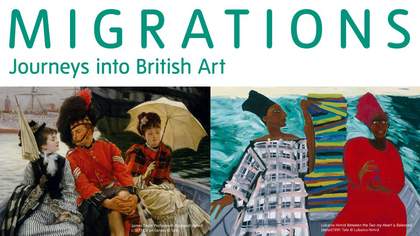Rebecca works on conserving and restoring paintings for display and at the moment she is working on a painting that has thrown up a bit of a conundrum. Donald Rodney’s How the West was Won was painted in 1982 while Rodney was only 21 and studying at Trent Polytechnic in Nottingham (now Nottingham Trent University).
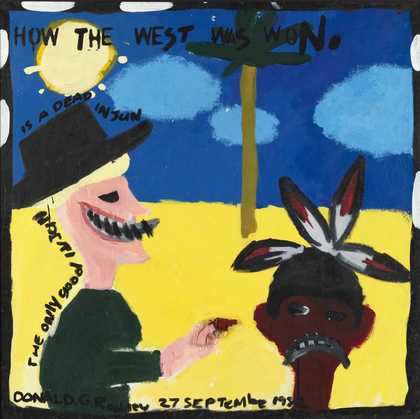
Donald Rodney
How the West was Won (1982)
Tate
How the West was Won is an important work in the history of contemporary British art – it dates from a time when Rodney was working with a group of young black artists who become known as the Pan-Afrikan Connection, and later the Blk Art Group. As an influential collective (which included Eddie Chambers, Keith Piper, Marlene Smith and Claudette Johnson) they were producing and exhibiting works that engaged directly with social and political issues, particularly black political struggles, in the UK and globally. As it looks currently, you see a stereotypical ‘Cowboy and Indian’ in a desert scene. The grinning Cowboy is pointing at the Indian, while a line of text runs up the Cowboy’s back, reading ‘The only good injun is a dead injun’. On a closer look, you can see however, that there is something missing from the Cowboy’s hand.

How the West was Won, detail Installed c.1982 © Estate of Donald Rodney
How the West was Won was exhibited in a Pan-Afrikan Connection show around this time, and photographed at that show, so we do know how it used to look and what is missing. In the image from 1982, you can clearly see the Cowboy is holding a red gun, and from the glue now left on the painting, you can also tell that this was not a flat, painted gun, but a toy gun fixed directly to the canvas.
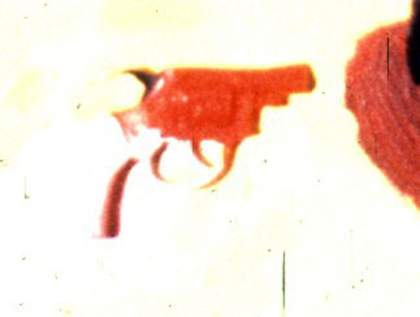
Close up detail of the gun
The work was presented to Tate by the Donald Rodney Estate in 2007, and Rebecca is preparing the work for display in the forthcoming Migrations exhibition at Tate Britain. The gun has been lost for some time and as the work is nearly 30 years old, it has become a detective job for Rebecca to try to find out what sort of gun Rodney might have used and whether it is possible to find a toy gun that would be historically correct to restore the painting’s original form (and with it, some of its communicative power). Alongside working with Rodney’s Estate and contemporaries to recall the work as it was at the time it was first displayed, she has started by analysing the trace the gun has left on the canvas – its shape, size and texture.
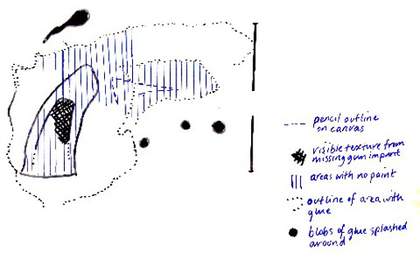
Diagram of the glue traces left on the painting
Talking about this, we have begun to wonder if there might be someone out there who would know specifically about the sort of toy guns produced before 1982, and therefore what gun it might have been that Donald Rodney used.
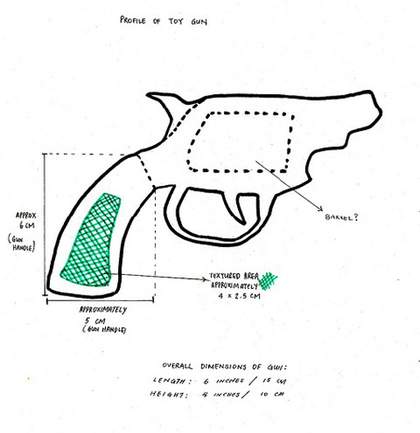
Likely size and shape of the toy gun
Looking at these images, can you help us? Do you know if there were red short-nosed plastic or metal guns in production in the early eighties that looked like this? Or maybe Rodney painted the gun – do you know what guns might fit these dimensions – with a textured handle inset like that? Rebecca (and I) would love to hear from you if you think you can shed some light on this mystery.

